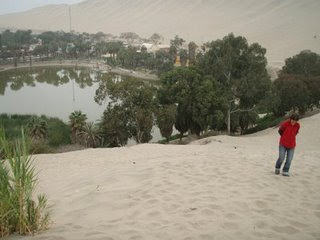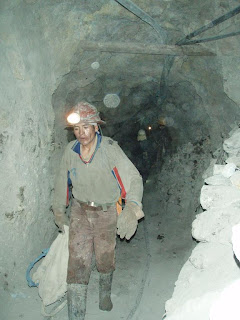Alpamayo, the ´muddy waters´in Quechua, became by chance known as the most beautiful mountain in the world. Many things happened by chance for this mountain. In the early days it was approached from its north side, from which it does look like a perfect Paramount pyramid. However today one rarely gets to see it that way, only when doing the Cedres valley trek.
The word got out though, and now it has become one of the most popular summits in the Cordiliera Blanca. The same legend goes about the routes on Alpamayo - the classic Ferrari route was first climbed more to the right from where the route goes now. The French Direct route was named after two French killed by an avalanche on it instead of the two Americans claiming its first ascent. A mountain with a story...
Santa Cruz valley is not only popular with mountaineers for the Alpamayo, Quitaraju, and Artesonraju approach, but also with trekkers that do Santa Cruz- Llanganuco circular trek in 4 days. It is also one of the longer valleys in Cordiliera Blanca without a road. It is around 20km and 2000m elevation gain to get to the Alpamayo base camp at 4 300 meters, and by then you are far from done, as there is a moraine camp at 4 900 at then a col camp at 5 400 before even starting to talk about the summit attempt.
We did the approach in 3 days, i guess it is possible in two, but you have to be fit and strong. We used a burro and an arriero for the first time to give ourselves all chances of success (picture of the mule and its driver above). It all starts in the obscure village of Cashapampa, reached by a bumpy ride in a shared taxi from Caraz, overall 3.5 hours from Huaraz. Again, the prices are rather random here - for more or less the same ride you pay 15 soles for two to Cashapampa village, 30 soles for two to the Llanganuco valley, and 60 soles to the Paron lake - go figure...
The hardest part of the approach is getting to the col camp, not only because of its attitude (5 500 meters at the Col), but also because of around 2 pitches of grade 3 ice to negotiate among bergshrunds with full packs. Apparently this col approach is getting worse every year, again due to Global Warming. Below view from the col trail:
The col camp is situated on the glacier, first time we are setting our tent on snow on this trip! Snow with all its pleasures, like this toilet spot a couple of meters from camp:
The col camp gives access to both, Alpamayo and Quitaraju, just down the glacier and turn either right or left, respectively. For neighbors, we shared the Col with another two parties - the two Swiss girls and their porter, and two New Mexicans. The American guys just got down from Alpamayo´s French Direct route as the Ferrari route has not been done this year due to a big bergshrund hanging just over its top-out. The Swiss girls were planning to go for the same route the next day, which left us with Quitaraju. The easier ridge route on Quitaraju was apparently as well out of condition because of the gaps in this ridge, which made us go with the North Face D- way up.
The weather finally has been spoiled a little, and clouds covered us practically each day around 10-11am. It even snowed one night to make us a little bit nervous.
The usual wake-up at 3 am, and off we go to our first 6000ender. The approach is a long traverse through the glacier under the col and some unhappy-looking bergshrunds. The route itself is a straightforward snow slope at around 40 degrees in average. It is around 9 pitches that we simulclimbed to the summit ridge. The most exciting about Quitaraju is its summit ridge. It resembles a little bit Kufner on Mont Maudit, a knife-blade cornice. Unfortunately, we had to do it in the clouds, and thus the views were blurred. The bizarre feeling of walking on the knife blade was still there, especially when your head is buzzing from the attitude.
We did get a couple of seconds of visibility to make a summit picture with the Santa Cruz summit in the background:
As usual, our plans to do the second mountain (Alpamayo) from the same camp were foresaken by the fatigue after the first mountain. We thus decided to go down the next day instead of trying the a bit more difficult and icy French Direct. The way down is definitely more fun than up, and the views are gorgeous - here is Ren on the first rappel from the col:
We did screw up arrangements with our burro driver that was supposed to come for us one day too late, which made us carry the backpacks all the way to Cashapampa, still managing the way down in 2 days instead of the 3 we used up for the approach. Overall, this made up for the longest expedition ever - 6 days for one mountain, we are becoming real mountain people!
























































